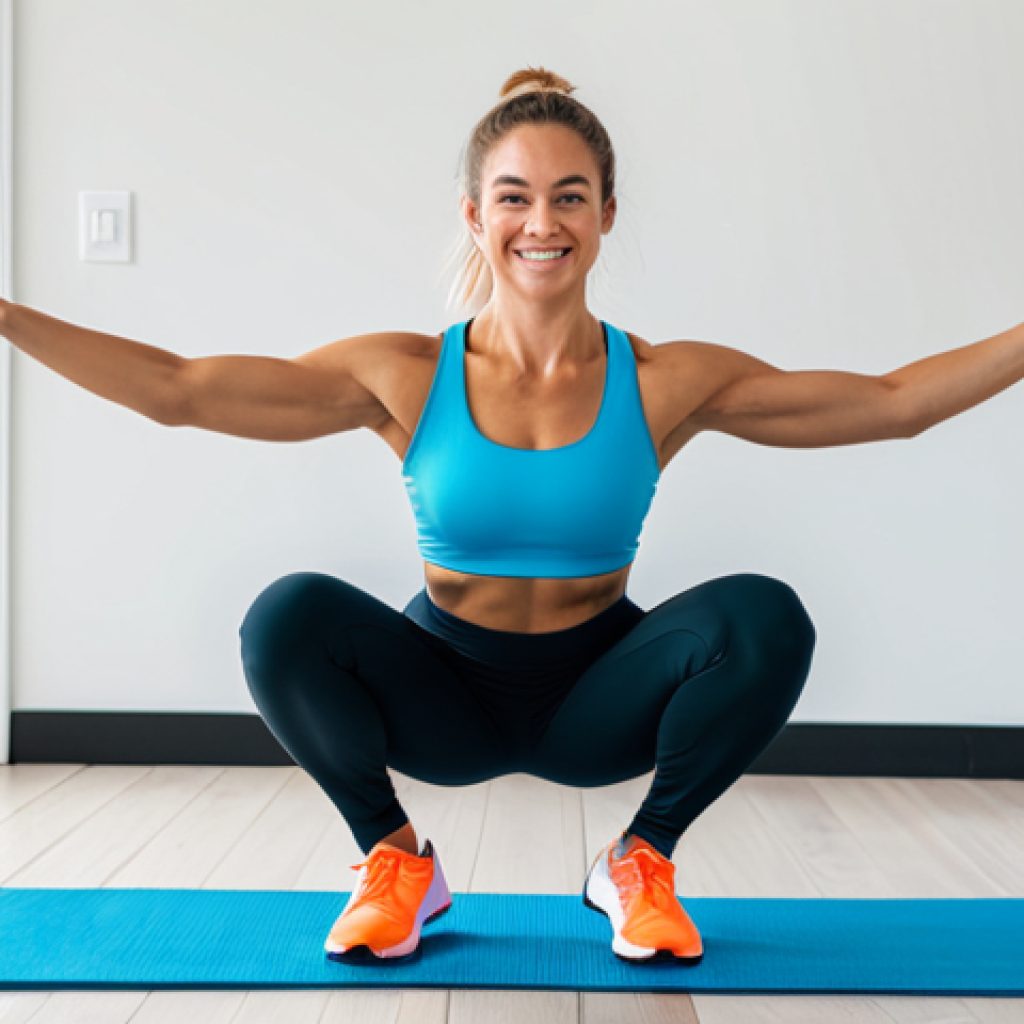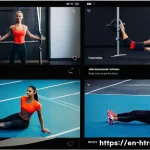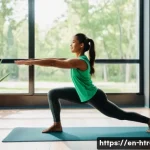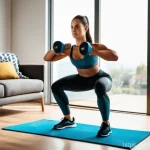Finding the time and motivation to hit the gym can feel like a Herculean task sometimes, right? I know I’ve definitely felt that squeeze between work, family, and just wanting a moment to myself.
But what if I told you that incredibly effective, calorie-blasting workouts are not only possible but *thriving* right within the comfort of your own living room?
When I first started dabbling, I was honestly skeptical about the intensity I could achieve without heavy gym equipment, but my own sweat and heart rate monitor quickly proved me wrong.
The fitness world has truly evolved, with cutting-edge apps offering personalized routines and savvy trainers designing high-impact, minimal-equipment sessions that rival any gym workout.
This shift towards accessible, efficient home fitness isn’t just a trend; it’s the future, allowing us to maximize calorie expenditure without ever stepping outside.
It’s truly amazing how a short, focused session can leave you feeling just as accomplished as a long gym trip. Let’s explore precisely how you can turn your home into a powerful calorie-burning zone.
Unlocking Peak Calorie Burn with High-Intensity Interval Training (HIIT) at Home
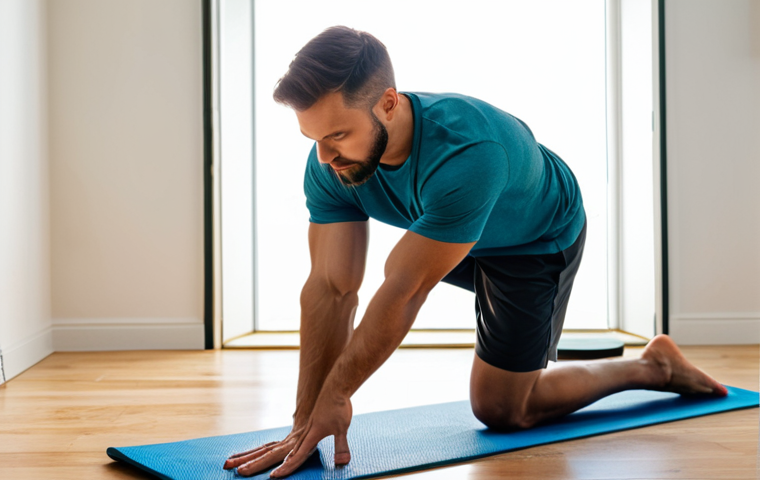
When I first dipped my toes into home workouts, the idea of getting a truly *intense* session without a gym full of equipment seemed almost laughable.
But then I discovered the magic of HIIT, and my perspective completely shifted. High-Intensity Interval Training is an absolute game-changer for calorie expenditure, and it’s incredibly adaptable to even the smallest living space.
The beauty of HIIT lies in its structure: short bursts of maximum effort followed by brief recovery periods. This isn’t just about the calories you burn during the workout itself; it’s about the “afterburn effect,” or EPOC (Excess Post-exercise Oxygen Consumption), where your body continues to torch calories at an elevated rate long after you’ve finished.
I’ve personally experienced this many times, feeling my metabolism humming hours later, even when I’m just sitting at my desk. It’s an exhilarating feeling to know your body is still working hard for you.
This method tricks your body into becoming a furnace, optimizing every single minute you dedicate to fitness. Forget slogging away on a treadmill for an hour; 20-30 minutes of focused HIIT can often yield superior results, leaving you a sweaty, satisfied mess.
1. Mastering Bodyweight HIIT Combos
The most accessible form of HIIT at home relies entirely on your own bodyweight, proving you don’t need fancy equipment to break a serious sweat. Think about the simple power of combining movements like burpees, mountain climbers, jumping jacks, and high knees.
The key is to execute each exercise with explosive power and maintain that intensity. For example, my go-to sequence often involves 45 seconds of burpees, followed by a 15-second rest, then 45 seconds of jump squats, and another 15-second rest, cycling through 4-5 different exercises for 3-4 rounds.
It sounds deceptively simple, but trust me, by the second round, your lungs will be burning and your muscles screaming in the best possible way. The amazing thing about bodyweight HIIT is its versatility; you can endlessly mix and match exercises to keep things fresh and target different muscle groups.
I’ve even found that adding plyometric elements, like broad jumps or box jumps (using a sturdy chair or step), can amplify the intensity significantly, pushing my heart rate into that optimal fat-burning zone almost instantly.
It’s a truly humbling experience to realize how powerful your own body can be.
2. Leveraging Minimal Equipment for Maximum Impact
While bodyweight is king, incorporating a few inexpensive pieces of equipment can elevate your home HIIT sessions even further. A good jump rope, for instance, is a cardio powerhouse.
Just five minutes of intense skipping can feel like an eternity and leaves me breathless every time. Resistance bands are another fantastic addition, perfect for adding an extra layer of challenge to squats, glute bridges, and upper body movements, engaging muscles more deeply and intensifying the calorie burn.
I’ve found that using a set of light dumbbells (2-5 kg) for exercises like thrusters, clean and presses, or goblet squats can dramatically increase the metabolic demand of a circuit.
The aim isn’t to lift heavy, but to maintain speed and fluidity, keeping your heart rate sky-high. My personal favorite is a simple kettlebell; its unique design allows for dynamic, full-body movements like swings and snatches that are incredibly effective for calorie expenditure and building functional strength.
It’s about being smart with your purchases, focusing on tools that offer diverse exercise options and truly push your limits within a limited space.
Optimizing Calorie Burn Through Strength Training Without a Gym
Many people mistakenly think of strength training as something only for bodybuilders or gym fanatics. However, incorporating effective strength exercises into your home routine is absolutely crucial for long-term calorie burning.
Muscle is metabolically active tissue, meaning it burns more calories at rest than fat does. So, the more lean muscle mass you build, the higher your basal metabolic rate (BMR) becomes, essentially turning your body into a more efficient calorie-burning machine 24/7.
This was a huge “aha!” moment for me. I realized that my focus shouldn’t just be on pounding out cardio, but also on carefully crafting a strength routine that builds and maintains muscle.
This isn’t about getting bulky; it’s about getting stronger, more toned, and supercharging your metabolism. The beauty is, you can achieve remarkable results without ever touching a barbell, using just your bodyweight, resistance bands, or a few simple free weights.
1. Building Foundational Strength with Bodyweight Basics
Bodyweight exercises are the bedrock of any solid home strength program. Think push-ups, squats, lunges, planks, and glute bridges. These aren’t just warm-up exercises; when performed with proper form and progressive overload, they can be incredibly challenging and effective.
For instance, progressing from standard push-ups to decline push-ups or even one-arm variations can continuously challenge your upper body. For squats, try single-leg squats (pistol squats) or Bulgarian split squats to really test your balance and leg strength.
I remember the immense satisfaction I felt the first time I could do a full pistol squat without assistance – it felt like a huge personal victory! The key here is not just repetition, but also variations and time under tension.
Holding a plank for an extended period, or performing slow, controlled squats, increases the demand on your muscles, leading to greater strength gains and, consequently, more calories burned.
Your body is your gym, and it’s surprisingly effective.
2. Adding Resistance for Enhanced Muscle Activation
Once you’ve mastered bodyweight basics, resistance bands and light dumbbells become your best friends for increasing muscle activation and intensity. Resistance bands are fantastic for adding challenge to lower body exercises like squats, glute kickbacks, and hip thrusts, really targeting those larger muscle groups.
For the upper body, I’ve found that performing bicep curls, tricep extensions, and overhead presses with light dumbbells (or even filled water bottles!) provides enough resistance to stimulate muscle growth without needing heavy weights.
The goal isn’t to lift heavy, but to create a high volume of quality repetitions that exhaust the muscle. I often use a technique called “supersets,” where I perform two exercises back-to-back with no rest, like push-ups immediately followed by dumbbell rows.
This keeps my heart rate elevated and maximizes the metabolic stress, leading to a fantastic burn. Don’t underestimate the power of these simple tools; they can truly transform your physique and your metabolism.
Incorporating Dynamic Cardio and Dance for Joyful Calorie Expenditure
Let’s be honest, sometimes the thought of another structured workout can feel like a chore. That’s why I absolutely adore incorporating dynamic cardio and dance into my home fitness routine.
Not only are they fantastic for burning a substantial amount of calories, but they also bring an element of fun and freedom that more traditional exercises sometimes lack.
There’s something incredibly liberating about putting on your favorite playlist and just moving, whether it’s following a guided dance workout or just letting loose to the beat.
I’ve found that when I’m genuinely enjoying the movement, I push myself harder and longer without even realizing it, turning a potential drag into a genuine highlight of my day.
This isn’t just about breaking a sweat; it’s about embracing movement as a form of self-expression and joy, which inevitably leads to more consistent adherence to a fitness routine.
1. High-Energy Dance Workouts and Fitness Games
The world of online fitness has exploded with incredible dance workouts, from hip-hop to Zumba, Bollywood to contemporary. These aren’t just about learning choreography; they’re meticulously designed to keep your heart rate elevated and your entire body engaged, turning a dance party into a serious calorie-blasting session.
Platforms like YouTube are treasure troves for free, instructor-led dance routines that range from beginner-friendly to incredibly challenging. I’ve spent countless evenings grooving to these videos, amazed at how quickly I become breathless and drenched in sweat, all while having a blast.
It genuinely feels less like “working out” and more like “playing.” Beyond structured dance, I’ve even experimented with fitness video games like those on Switch, which can be surprisingly effective.
The competitive or interactive element makes you forget you’re exercising, leading to longer, more intense sessions.
2. Freestyle Movement and Calisthenics-Inspired Cardio
Sometimes, the best workout is the one you invent on the spot. Freestyle movement, where you simply move your body in ways that feel good and challenging, can be incredibly effective.
Put on your favorite upbeat music and just let your body go! This could involve skipping, jumping, shadow boxing, or even just sprinting in place. The beauty is there’s no right or wrong, just continuous motion.
I’ve found that combining elements of calisthenics with continuous cardio, like doing burpees, then immediately transitioning into high knees, then jump squats, creates a challenging flow that keeps my heart rate soaring.
It’s about maintaining fluidity and intensity. This approach allows for incredible personalization; you can adjust the movements and intensity based on your energy levels and mood each day, ensuring that every session is both effective and enjoyable.
It’s a testament to how your own creativity can fuel your fitness journey.
Strategic Integration of Active Recovery for Sustained Calorie Burn
It might sound counterintuitive, but active recovery plays a surprisingly vital role in maximizing your overall calorie expenditure from home workouts.
When we think about “burning calories,” our minds usually jump straight to high-intensity exercises. However, the body needs time to recover and rebuild, and doing so actively can actually keep your metabolism humming without overstressing your system.
Overtraining can lead to burnout, injuries, and a plateau in progress, which are the absolute last things we want. I’ve learned this the hard way, pushing too hard only to feel completely drained and unmotivated the next day.
Embracing active recovery days, rather than complete rest, ensures consistent blood flow, helps flush out lactic acid, and keeps your body moving, which maintains a slightly elevated metabolic rate compared to being completely sedentary.
It’s about smart training, not just hard training.
1. Gentle Yoga and Pilates for Flexibility and Core Strength
Yoga and Pilates are magnificent forms of active recovery that also build foundational strength and flexibility, both of which support more intense workouts.
While they might not provide the immediate, explosive calorie burn of HIIT, they contribute significantly to your overall metabolic health. A strong core, for instance, improves your form in virtually every exercise, allowing you to perform movements more efficiently and intensely when you *are* pushing yourself.
I’ve noticed a significant improvement in my posture and a reduction in minor aches and pains since consistently incorporating 20-30 minutes of gentle yoga or Pilates into my recovery days.
Online platforms offer countless free classes, making it easy to find a session that suits your mood, whether you want a gentle stretch or a more challenging core workout.
It’s a wonderful way to connect with your body and ensure it’s ready for the next high-intensity session.
2. Low-Impact Cardio Walks and Mobility Drills Indoors
Even on active recovery days, staying completely still isn’t always the best option for calorie expenditure. Low-impact cardio, such as brisk walking around your home (yes, it’s possible even in a small space!) or simply marching in place, can maintain a steady, moderate heart rate without putting undue stress on your joints.
I’ve found that putting on a podcast and simply pacing around my living room for 30 minutes can feel surprisingly refreshing and contribute to my daily movement goals.
Additionally, incorporating mobility drills, like arm circles, leg swings, hip rotations, and dynamic stretches, helps to lubricate your joints and increase your range of motion.
These subtle movements keep your body primed and ready. They might not feel like a typical “workout,” but they keep your internal engine ticking over, contributing to your overall calorie burn throughout the week and preventing stiffness that could hinder your next big session.
Leveraging Digital Tools and Community for Enhanced Home Workout Motivation
One of the biggest hurdles to consistently working out at home, as I’ve personally experienced, isn’t the lack of equipment or space, but rather the struggle with motivation and accountability.
It’s so easy to just skip a session when there’s no one watching or no commute involved. This is where the incredible world of digital fitness apps, online communities, and virtual trainers truly shines.
These resources aren’t just about providing workouts; they create an ecosystem of support, guidance, and encouragement that can turn a lonely home workout into an engaging, dynamic experience.
I honestly don’t know where I’d be without the vast array of options available to me now – they’ve completely transformed my consistency.
1. Exploring Feature-Rich Fitness Apps and Virtual Trainers
From subscription-based apps offering personalized workout plans to free YouTube channels with thousands of guided sessions, the digital landscape for home fitness is richer than ever.
Apps often provide structured programs that progress with you, tracking your reps, sets, and even calories burned. Many also include virtual trainers who guide you through each movement, correcting form and offering encouragement.
I’ve found apps with leaderboards or challenge features to be incredibly motivating, tapping into my competitive side. The convenience is unparalleled; you can literally wake up, roll out of bed, and have a world-class trainer in your living room within minutes.
This immediate access removes so many common excuses and provides a seamless transition from thought to action. It’s like having a personal coach without the hefty price tag.
2. Engaging with Online Fitness Communities for Accountability
Beyond the structured workouts, the sense of community provided by online forums, social media groups, and live workout streams can be a powerful motivator.
Sharing your progress, struggles, and triumphs with like-minded individuals creates a powerful sense of accountability. I’ve joined several Facebook groups dedicated to specific home workout programs, and the support I’ve received there has been invaluable.
Seeing others’ achievements inspires me, and knowing that I can ask for advice or share my own journey keeps me engaged. Many virtual trainers also host live sessions where you can work out alongside others in real-time, creating a shared experience that makes you feel less alone in your fitness journey.
This social connection is a critical, often underestimated, component of long-term adherence.
| Home Workout Type | Average Calorie Burn (30 mins) | Key Benefits | Required Equipment |
|---|---|---|---|
| High-Intensity Interval Training (HIIT) | 300-500 calories | High EPOC, improves cardiovascular health, time-efficient | None (Bodyweight), or jump rope, resistance bands, light dumbbells |
| Bodyweight Strength Training | 200-350 calories | Builds lean muscle, increases metabolism, improves functional strength | None (Bodyweight), or resistance bands, stability ball |
| Dance/Cardio Workouts | 250-450 calories | Fun, improves coordination, boosts mood, high cardiovascular impact | None (Bodyweight) |
| Yoga/Pilates (Active Recovery) | 100-200 calories | Improves flexibility, strengthens core, reduces stress, aids recovery | Yoga mat, resistance bands, light weights (optional) |
Nutrition and Hydration: Fueling Your Calorie-Burning Machine
You can sweat it out in your living room for hours, but if your nutrition isn’t on point, you’re essentially driving a high-performance car with low-octane fuel.
What you put into your body directly impacts your energy levels, recovery, and ultimately, your ability to burn calories efficiently. This was another huge lesson I learned on my fitness journey: exercise is only half the battle.
To truly maximize calorie expenditure and see real results from your home workouts, you need to support your body with the right nutrients and stay adequately hydrated.
It’s like tending to a garden – you can plant the seeds (workouts), but without proper watering and soil (nutrition), they won’t flourish.
1. Prioritizing Protein for Muscle Repair and Satiety
Protein is arguably the most critical macronutrient for anyone aiming to burn calories and build a strong, lean physique. Not only does it support muscle repair and growth (which, as we discussed, boosts your metabolism), but it also has a higher thermic effect of food (TEF) compared to fats and carbohydrates, meaning your body burns more calories just to digest it.
Furthermore, protein is incredibly satiating, helping you feel fuller for longer and reducing the likelihood of overeating. After a tough home workout, my go-to is usually a protein shake or a meal rich in lean protein like grilled chicken and vegetables.
I’ve found that ensuring I get enough protein throughout the day keeps my energy levels stable and curbs those pesky cravings that can derail progress.
Think about incorporating sources like chicken breast, fish, eggs, Greek yogurt, lentils, or tofu into every meal.
2. The Crucial Role of Hydration and Electrolytes
Water is often overlooked, but it’s absolutely fundamental to every bodily function, including metabolism and calorie burning. Dehydration can lead to fatigue, reduced performance, and even a slower metabolic rate.
I’ve noticed a significant drop in my energy and an increase in muscle cramps if I’m not consistently sipping water throughout the day, especially around my workouts.
Aim for at least 8 glasses of water daily, and even more on workout days. For longer or more intense home sessions, especially if you’re sweating a lot, consider adding electrolytes to your water.
These minerals (like sodium, potassium, and magnesium) are lost through sweat and are crucial for nerve and muscle function. I often add a sugar-free electrolyte tablet to my water during or after a particularly grueling HIIT session, and it makes a noticeable difference in my energy and recovery.
It truly amazes me how much of an impact something as simple as water can have.
Mastering Recovery and Sleep for Optimal Calorie-Burning Potential
You might push yourself incredibly hard during your home workouts, feel the burn, and sweat profusely. But here’s the thing I’ve learned: the actual magic of muscle repair and metabolic boost largely happens *outside* of your workout window, specifically during recovery and sleep.
Neglecting these aspects is like trying to build a skyscraper without laying a proper foundation. Your body needs adequate time and resources to adapt to the stress of exercise, rebuild muscle fibers, and rebalance hormones.
I’ve personally experienced the frustration of feeling fatigued and seeing my progress stall when I consistently skimped on sleep, no matter how dedicated I was to my training.
It’s not just about working hard; it’s about recovering even harder.
1. Prioritizing Quality Sleep for Hormonal Balance
Sleep is non-negotiable for anyone serious about fitness and calorie burning. During deep sleep cycles, your body releases growth hormone, which is vital for muscle repair and fat metabolism.
Conversely, lack of sleep can increase cortisol (a stress hormone that encourages fat storage) and ghrelin (a hunger-stimulating hormone), while decreasing leptin (a satiety hormone).
This creates a vicious cycle where you feel hungrier, store more fat, and have less energy for your workouts. I aim for 7-9 hours of quality sleep every night, and I can tell you, the difference in my energy levels, mood, and workout performance is night and day.
Creating a consistent sleep schedule, dimming lights an hour before bed, and avoiding screens can drastically improve your sleep quality. It’s an investment in your fitness goals that pays dividends.
2. Active and Passive Recovery Techniques
Beyond sleep, incorporating specific recovery techniques can significantly enhance your body’s ability to bounce back and continue burning calories efficiently.
Active recovery, as mentioned before, involves low-intensity movement that promotes blood flow without stressing muscles. Think light stretching, foam rolling, or a gentle walk.
I swear by foam rolling after intense leg days; it helps release muscle knots and soreness, making me feel much more limber for my next session. Passive recovery includes things like massage, heat therapy (a warm bath with Epsom salts feels heavenly after a tough workout!), or cold therapy (like a cold shower or ice pack on a sore muscle).
While these don’t directly burn calories, they optimize your body’s recovery process, ensuring you’re primed for subsequent intense workouts that *do* burn significant calories.
Think of it as tuning your engine so it runs at peak performance every time.
Concluding Remarks
Embarking on a journey to maximize calorie burn from the comfort of your home is not just achievable; it’s genuinely transformative. As I’ve personally discovered, it empowers you to take control of your fitness without the barriers of a traditional gym.
By strategically integrating HIIT, strength training, dynamic cardio, and crucially, prioritizing recovery and proper nutrition, you unlock your body’s full potential.
Remember, consistency beats intensity every time, and finding joy in movement is the ultimate secret weapon. So, lace up those sneakers, put on your favorite tunes, and redefine what’s possible within your own four walls.
Useful Information
1. Track Your Progress: Keep a simple journal or use a fitness app to log your workouts. Seeing your improvements, whether it’s more reps, longer duration, or increased energy, is a huge motivator and helps you stay consistent.
2. Listen to Your Body: It’s okay to have off days. Pushing through extreme fatigue or pain can lead to injury. Rest when needed, modify exercises, and remember that gradual progress is sustainable progress.
3. Mix It Up: Your body adapts quickly. To keep challenging yourself and prevent plateaus, regularly change your workout routine. Introduce new exercises, alter the order, or try a completely different style of workout.
4. Set Realistic Goals: Start small and build up. Instead of aiming for an hour-long workout every day, commit to 15-20 minutes three times a week. Achieving these smaller goals builds confidence and makes fitness feel less daunting.
5. Incorporate Movement Throughout Your Day: Beyond dedicated workouts, look for opportunities to move more. Take the stairs, stretch during commercial breaks, or pace while on a phone call. Every bit of activity adds to your total calorie expenditure.
Key Takeaways
Maximizing calorie burn at home is a holistic approach combining High-Intensity Interval Training (HIIT) for efficiency, strength training to boost metabolism, and dynamic cardio for enjoyment.
Crucially, supporting your efforts with proper nutrition, hydration, and prioritizing sleep and active recovery is non-negotiable for sustained results and overall well-being.
Leverage digital tools and online communities for motivation and accountability. Your home is your gym, and consistency is your ultimate ally.
Frequently Asked Questions (FAQ) 📖
Q: Do I really need a bunch of expensive equipment or a massive open space to get a proper, calorie-blasting workout done at home?
A: Honestly, this was my biggest hang-up too! I remember looking at all those sleek Instagram fitness influencers with their dedicated home gyms and thinking, “Well, that’s just not my reality.” But here’s the absolute truth I’ve discovered: you absolutely do not need fancy gear or a huge living room.
Most of my most intense, sweat-drenched sessions happen with just my own bodyweight, maybe a set of resistance bands I picked up for like fifteen bucks, and enough space to lie down and extend my arms.
Think about it – burpees, planks, jump squats, lunges, push-ups… these are all incredible calorie burners, and all you need is gravity and a willingness to move.
Many of the best apps out there, the ones I personally use, are designed precisely for minimal space and no equipment. It’s truly liberating to realize you can get just as much out of a focused 20-minute bodyweight circuit as you might from lugging yourself to the gym for an hour.
Q: Okay, but how do I actually stay motivated and consistent when my couch is right there, practically begging me to sit down and scroll? The struggle is real!
A: Oh, the struggle is REAL, isn’t it? Trust me, I’ve had countless days where the thought of even putting on my workout clothes felt like scaling Everest.
What I’ve learned, though, is that consistency isn’t about brute-forcing yourself every single day. It’s about finding what sparks you. For me, it’s been about variety – one day I might do a high-energy dance fitness class online, the next a quick HIIT circuit, and sometimes, if I’m really dragging, just a gentle yoga flow to keep the habit going.
I also find success in pairing my workout with something I enjoy afterwards, like a specific podcast or a treat meal. It’s less about rigid discipline and more about gentle persuasion for your future self.
Start small, celebrate every single session, no matter how short, and don’t beat yourself up if you miss a day. Just lace up tomorrow.
Q: Can home workouts really burn as many calories as a dedicated gym session, or am I just kidding myself about the intensity I can achieve outside of a gym environment?
A: This was the question that kept me up at night initially, I won’t lie. For years, I believed true fitness could only be achieved within the sacred walls of a gym.
But then I started experimenting, tracking my heart rate with my smartwatch, and paying attention to that post-workout burn. And you know what? The numbers don’t lie!
Home workouts, especially those focused on High-Intensity Interval Training (HIIT) or Tabata, are absolute calorie furnaces. We’re talking about pushing yourself to your max for short bursts, then brief rests, which skyrockets your heart rate and keeps it elevated, leading to a phenomenal calorie expenditure both during and after the workout (that’s the “afterburn effect”!).
I’ve had 25-minute living room sessions that left me more breathless and sweaty than an hour on an elliptical at the gym. It’s all about how you structure your time and the intensity you bring, not necessarily the equipment or location.
There’s a unique kind of pride in knowing you just smashed a workout without leaving your four walls.
📚 References
Wikipedia Encyclopedia
구글 검색 결과
구글 검색 결과
구글 검색 결과
구글 검색 결과
구글 검색 결과
